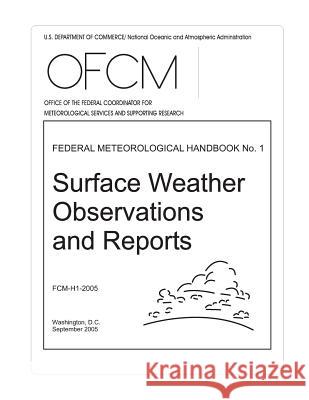Surface Weather Observations and Reports: FEDERAL METEOROLOGICAL HANDBOOK No. 1 » książka
Surface Weather Observations and Reports: FEDERAL METEOROLOGICAL HANDBOOK No. 1
ISBN-13: 9781506147925 / Angielski / Miękka / 2015 / 104 str.
Surface Weather Observations and Reports: FEDERAL METEOROLOGICAL HANDBOOK No. 1
ISBN-13: 9781506147925 / Angielski / Miękka / 2015 / 104 str.
(netto: 65,14 VAT: 5%)
Najniższa cena z 30 dni: 68,02 zł
ok. 16-18 dni roboczych
Bez gwarancji dostawy przed świętami
Darmowa dostawa!
Chapter 1 presents an introductory overview of surface weather observations. Chapter 2 discusses the surface weather observation program, types of observations, criteria for specials, general observing standards, and dissemination. Chapter 3 presents the certification and quality control standards. It discusses certification of observers and quality control performed on-site, and at remote locations. Chapter 4 defines the requirements for maintaining records of surface weather data. It discusses the types of records, preparation and maintenance of the Station Information File, types of storage, and procedures for maintaining records of surface weather data. Chapters 5 through 11 focus on a specific element (e.g., Visibility is an element) and all the associated parameters (e.g., Prevailing Visibility and Sector Visibility are visibility parameters) of that element that appear in the weather report. The elements are: Wind (Chapter 5), Visibility (Chapter 6), Runway Visual Range (Chapter 7), Present Weather (Chapter 8), Sky Condition (Chapter 9), Temperature and Dew Point (Chapter 10), and Pressure (Chapter 11). Each chapter contains a similar format: a brief overview of the chapter, a section that describes parameters, and a section that defines further the observing and reporting standards for the reports. Each chapter also contains a Summary Table that offers an abridged listing of standards described in the chapter. By design, these summary tables do not contain all of the details found in the text. Therefore, these tables should only be used as an overview of the standards contained in the chapter. Chapter 12 defines the coding procedures for reports in the METAR/SPECI format. Appendix A is a Glossary. Appendix B is a list of Abbreviations and Acronyms. Appendix C lists Sensor Standards. Appendix D contains Runway Visual Range Tables. Throughout this Handbook, the following definitions apply: a. "shall" indicates a standard is mandatory. b. "should" indicates a standard is recommended. c. "may" indicates a standard is optional. d. "will" indicates futurity; it is not a requirement to be applied to standards.
Zawartość książki może nie spełniać oczekiwań – reklamacje nie obejmują treści, która mogła nie być redakcyjnie ani merytorycznie opracowana.











